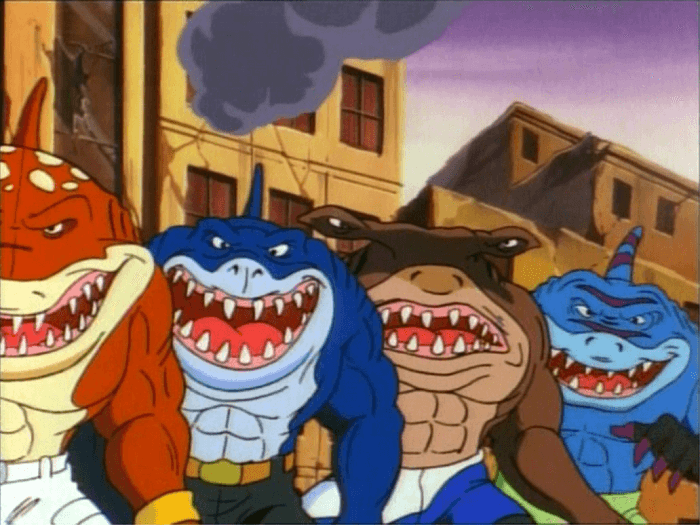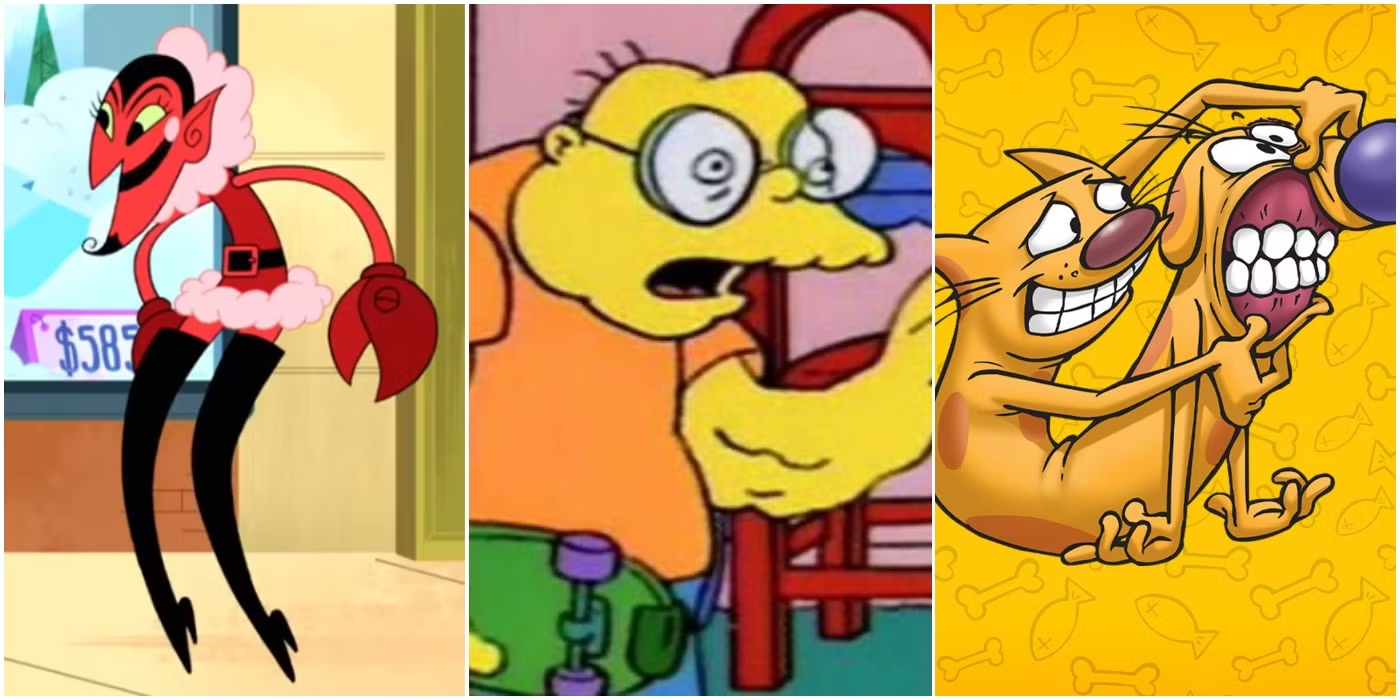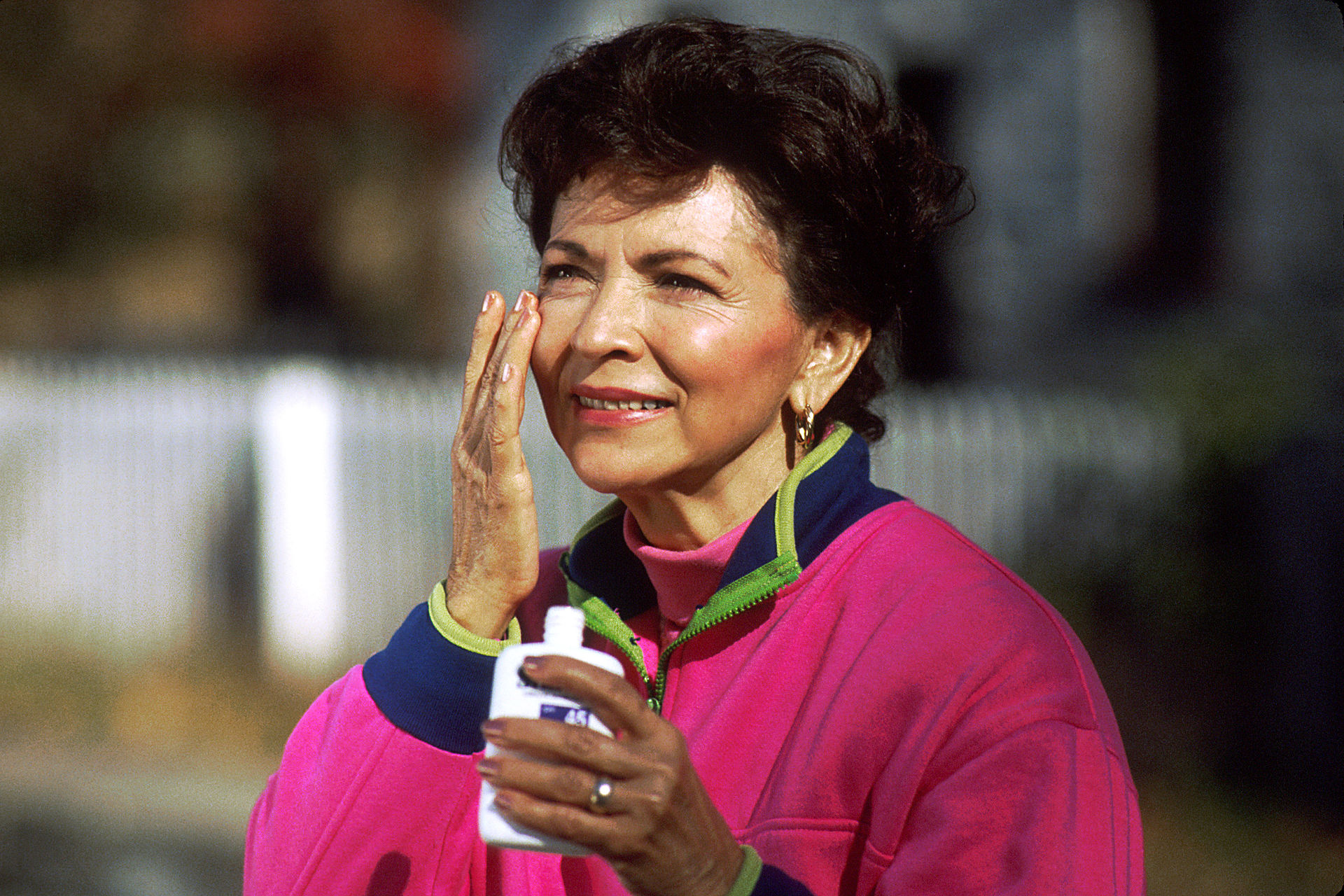Old cartoon characters from our past have carved out a special place in our generation’s memories. The 70s brought us some fascinating cartoon series that fascinated viewers with their storytelling and character growth. Many iconic characters live on through new media adaptations, yet plenty of beloved animated figures have somehow vanished into thin air.
These old-school cartoon characters disappeared without proper goodbyes as the animation industry changed faster than ever. The Flintstones’ characters connected with audiences through their laid-back lifestyle and gave viewers fresh entertainment experiences. These weird cartoon characters stood out from typical shows with their over-the-top traits, odd personalities, and unusual looks. Cartoons shaped much of our childhood by making us laugh and teaching us about respect, friendship, courage, determination, and love.
This nostalgic trip looks at what happened to these forgotten heroes – from female characters to the most obscure ones from the 70s and 80s. These characters fascinated our imagination years ago, and their effect still lives in the memories of everyone who watched them.

Forgotten Faces from the 70s
The 1970s gave us amazing animated characters that fascinated audiences with their unique designs and storytelling approaches. These creations have mostly faded into obscurity. The older generation remembers them fondly, but younger viewers barely know they exist.
Bagpuss: The saggy cloth cat with charm
Bagpuss, the pink and white striped cloth cat, first showed up in 1974 and became one of Britain’s most beloved yet increasingly hard-to-find cartoon characters. Peter Firmin and Oliver Postgate created this “old, saggy cloth cat, baggy, and a bit loose at the seams” through their company Smallfilms. The show ran for just 13 episodes from February to May 1974. The cat’s charm left a lasting effect – he reached the top spot in a BBC poll for the UK’s favorite children’s television program in 1999.
The creators employed innovative stop-motion animation techniques that made Bagpuss special. Each episode had a simple pattern: Emily, a little girl, would find lost or broken objects and place them in front of Bagpuss. As the cat woke from his slumber, the screen would change from sepia photographs to colorful stop-motion. Bagpuss and his friends would fix these broken items. The cast included Professor Yaffle, a pompous wooden woodpecker based on philosopher Bertrand Russell, and a group of hardworking mice.
Godzooky: The misunderstood sidekick
The 70s also brought us Godzooky, who made his debut in 1978 in Hanna-Barbera’s animated series “Godzilla”. Don Messick voiced this smaller, funnier version of the famous movie monster Godzilla. The character added comic relief and helped connect Godzilla with the human characters.
Godzooky couldn’t breathe fire like his scary cousin. Instead, he puffed out black smoke rings that made him cough. He had small wings under his forearms and flew with surprising grace. His most useful trait was his distinctive roar that could call Godzilla whenever humans needed help.
Viewers often found Godzooky more annoying than cute. After the show ended, he vanished from future Godzilla adaptations. He became one of the least remembered cartoon characters from a major franchise.
The Herbs: A garden of quirky personalities
“The Herbs” stands out as a unique creation among forgotten cartoon characters. This British animated series hit the screens in February 1968. The show featured a magical garden filled with characters named after herbs and plants. Michael Bond, who also created Paddington Bear, brought these botanical characters to life using 3D stop-motion animation.
Parsley the Lion led the show’s cast. This shy but friendly character welcomed viewers at the garden gate. The garden had many colorful residents: Dill the Dog never stopped chasing his tail, Sage the Owl stayed grumpy and plump, Sir Basil and Lady Rosemary acted posh, and Bayleaf the Gardener kept the magical garden in shape.
“The Herbs” stood out because of its clever writing that worked for both kids and adults. Parsley’s dry humor often went over children’s heads, creating an experience that was way ahead of its time.
These forgotten cartoon characters from the 70s show just a glimpse of that era’s creative animation. Each one brought something special to the screen, and they still charm anyone lucky enough to find them today.

Obscure 80s Cartoon Characters We Miss
The striking world of 80s animation brought viewers an eclectic mix of characters. These characters captured our imagination briefly before they disappeared from mainstream media. These obscure 80s cartoon characters mixed unique visual styles with groundbreaking concepts that challenged children’s entertainment.
Jem: Glam rock and girl power
Jerrica Benton created the secret identity pop star concept as Jem, the pink-haired frontwoman of Jem and the Holograms, long before Hannah Montana came along. This animated musical series ran from 1985 to 1988 in U.S. first-run syndication. Jem’s sophisticated story showed Jerrica transforming into her glamorous alter ego with Synergy, a holographic computer her late father built.
Each episode cleverly featured three songs, with music videos that matched MTV’s “in-your-face” style at the time. Jem dolls had outsold Barbie by June 1986, with sales exceeding three million dolls by September 1987.
The show tackled serious themes way beyond the reach and influence of typical children’s programming – identity, grief, corporate sabotage, and social justice. The series highlighted friendship’s positive aspects and showed how Jerrica and her bandmates used teamwork to overcome challenges. Hasbro brought back Britta Phillips – Jem’s original singing voice – to re-record six iconic tracks recently, celebrating the show’s 40th anniversary.
Firestar: A superheroine ahead of her time
Angelica Jones (Firestar) stands out among obscure female cartoon characters as one of the rare heroes created for television before comics. She first appeared in 1981’s “Spider-Man and His Amazing Friends” as a replacement for the Human Torch, whose rights weren’t available due to licensing issues.
The creative team thought about names like Heatwave, Firefly, and Starblaze before settling on Firestar, a character with microwave energy manipulation powers that let her fly and generate heat. The producers created her because they worried children might copy the Human Torch by playing with fire.
Firestar didn’t show up in Marvel’s mainstream comics until “Uncanny X-Men #193” in May 1985, four years after her TV debut. The animated series showed her finding her powers early in life. She earned the nickname “Miss Angelica Jinx” after she accidentally melted a snowman and a dollhouse. She joined the X-Men and later teamed up with Spider-Man and Iceman as the “Spider-Friends”.
Dudley Do-Right: The parody hero we forgot
Dudley Do-Right started as a supporting character on “Rocky and Bullwinkle.” He was a lovably incompetent Royal Canadian Mounted Police officer who poked fun at silent-movie melodramas. Jay Ward and Alex Anderson created him in 1948 for “Crusader Rabbit,” one of TV’s earliest animated series.
His stories usually involved protecting Inspector Fenwick’s daughter Nell from Snidely Whiplash’s evil plans. He often saved the day through pure luck or his horse’s smarts rather than his own skills. ABC reimagined him for “The Bullwinkle Show” in 1961 and later gave him his own half-hour animated anthology series in the late 1960s.
Dudley starred in a 1999 live-action film with Brendan Fraser. The movie flopped both critically and commercially, making just $9.9 million domestically against a $22 million budget. Notwithstanding that, his mix of altruism and comical clumsiness still entertains viewers decades later, showing how even obscure cartoon characters can keep their appeal.
90s Icons That Faded Too Soon
The 1990s brought us a golden age of animated TV shows with unforgettable characters. These characters won viewers’ hearts with their unique personalities but have slowly disappeared from today’s media world.
Dexter: The boy genius in hiding
Genndy Tartakovsky’s “Dexter’s Laboratory” (1996-2003) told the story of a brilliant young boy who kept a secret lab in his bedroom. Dexter wore his trademark white lab coat, large rubber gloves, and boots. He spoke with an accent that wasn’t quite German – Tartakovsky called it “not really German… just Eastern European”. The creator added this accent because he thought “all scientists are foreign and have accents”.
Dexter’s amazing brain couldn’t save him from failure when he got too excited and rushed into things. The show’s humor came from his battles with Dee Dee, his outgoing sister who always found ways into his lab and messed up his experiments. Their back-and-forth actually drew inspiration from Tartakovsky’s relationship with his older brother, Alex.
Mojo Jojo: The villain with a plan
Mojo Jojo stood out as one of Cartoon Network’s most memorable bad guys in “The Powerpuff Girls.” He started as Professor Utonium’s helper named Jojo until an accident made him super smart – the same one that created the Powerpuff Girls. The Professor forgot about him, so Mojo covered his big brain with an old overcoat, scarf, and paper bag.
People loved how Mojo talked – he would say things over and over, making the obvious even more obvious. He lived a somewhat normal life outside his evil schemes and bought groceries like anyone else. Sometimes he even played the hero, like in “The Powerpuff Girls Rule!!!” where he used the Key to the World to fix global warming and hunger.
Courage: The scared dog with a big heart
“Courage the Cowardly Dog” (1999-2002) featured a pink dog who seemed scared of everything but would do anything to save his family. John R. Dilworth created this show set in “Nowhere, Kansas,” where Courage faced weird, scary, and often supernatural threats.
Muriel Bagge rescued Courage from a vet clinic, and he lived with her and Eustace, her grumpy husband. Though always afraid, Courage could do amazing things – his screams broke floors, and he bounced back from what looked like deadly injuries. The show’s final episode revealed why Courage ended up alone – an evil vet sent his parents to the moon, but Courage beat this vet while saving Muriel and Eustace.
These 90s cartoon characters brought depth and fresh storytelling to TV. They deserve more recognition today, given how creative and special they were during their time on screen.
Why These Characters Disappeared
The disappearance of beloved animated characters goes beyond simple nostalgia. Several complex industry forces have revolutionized the entertainment world. These mysterious vanishing acts of obscure cartoon characters happened because multiple factors worked together.
Changing animation trends
Animation technology has changed dramatically over the decades. Many older cartoon characters became obscure as the industry moved from traditional hand-drawn techniques to 3D animation, immediate rendering, and AI-helped production. These changes cut energy consumption by 30%. Cloud rendering technology came into play, which let studios reuse up to 60% of keyframes from previous projects. New technological advances created a visual gap that made once-popular characters look outdated next to newer, more sophisticated visual offerings.
Corporate decisions and licensing issues
Business dynamics behind the scenes are a vital part of why characters disappeared. Networks often ended promising shows whatever the fans wanted. To name just one example, see “Invader Zim” and “Sym-Bionic Titan” – both canceled after single seasons because networks suddenly wanted younger-oriented content. “OK KO: Let’s Be Heroes” met the same fate after 2½ seasons despite its growing popularity. Licensing problems sometimes stopped characters from appearing. “Race” from “Jonny Quest” needed substantial changes during the 1990s revival because of cultural sensitivity concerns.
Shifts in audience priorities
Each generation brings new audience expectations. A 2024 Nielsen report shows 68% of viewers want content that reflects diverse cultures, genders, and abilities. 75% of Gen Z looks for eco-friendly brands, which affects character development choices. The animation industry responded by creating authentic characters. Those with diverse backgrounds bring in 2.3x more at the box office. Many obscure cartoon characters from the 70s and 80s no longer lined up with today’s values and faded away.
This pattern shows why once-popular characters like Bagpuss, Godzooky, and Firestar gradually disappeared. Cross-media franchises now thrive and generate 35% higher revenue than single-platform intellectual properties. The animation market keeps growing rapidly. Projections show it reaching USD 587 billion by 2030, but most of this growth comes from new characters rather than bringing back obscure ones.
Could They Make a Comeback?
Streaming services have given new life to forgotten animated treasures. This suggests a bright future for obscure cartoon characters.
Streaming platforms and nostalgia
Streaming services now serve as powerful tools to bring older cartoons back to life. Disney+ and Hulu’s “King of the Hill” revival showed amazing potential with 4.4 million views in its first week. The success didn’t stop there. The original series racked up 26 million viewing hours since March and hit the billion-hour mark on both platforms. Netflix brought “Carmen Sandiego” back to life and drew viewers with stunning visuals and characters people loved. These platforms create unexpected audiences for older shows and introduce vintage characters to new generations.
Modern reboots and revivals
The way creators approach revivals makes a big difference. Some shows succeed because they keep their original charm while adding modern touches. “DuckTales” kept what made the original special but added serialized storytelling and gave unique personalities to characters who used to be similar. “Beavis and Butt-Head” won big by sticking to what made people laugh in the first place. Their humor stayed relevant even decades later. Not every revival works out well. Warner Bros. Animation put Looney Tunes characters in suburban settings, which showed how missing a property’s core appeal can make revival attempts fail.
Fan communities keeping them alive
Dedicated fan groups keep interest in obscure cartoon characters alive between official releases. These communities come together because they share love for specific cartoons. They create spaces to talk about favorite shows, share artwork, and celebrate characters that mean something special to them. Their dedication can influence revival decisions. Greg Daniels brought back “King of the Hill” after fans showed continued interest. This community-driven support explains why shows like “Codename: Kids Next Door” and “Ed, Edd n Eddy” could be perfect for future reboots.
Summing all up
These forgotten animated figures create a powerful nostalgic connection with their audiences. Characters like Bagpuss, Godzooky, Jem, and Courage have faded from mainstream visibility, yet their legacy lives on through their original viewers. New animation technology, changing priorities, and corporate decisions have pushed them away from popular culture. These obscure cartoon characters still hold deep cultural value.
Strategic revivals have shown that audiences want to reconnect with characters from their past. The digital world has changed animation by giving new life to forgotten series and bringing them to new generations. Fan communities keep these characters alive through their advocacy, creative works, and enthusiasm.
A look at these unique cartoon characters shows us more than just entertainment history. They showcase distinct eras of storytelling, animation techniques, and cultural values. Characters from the psychedelic 70s, vibrant 80s, and experimental 90s each brought unique views and personalities that resonated with their viewers.
This trip through animation’s forgotten corners reminds us why these characters meant so much. They shaped childhoods, taught lessons, and created memories for millions despite their disappearance. Their comeback remains possible as nostalgia drives content decisions in the entertainment industry. These obscure cartoon characters may have vanished for now, but their spirit lives on through the fans who remember them.
Here are some FAQs about obscure cartoon characters:
What is the most obscure cartoon?
One of the most obscure cartoons is “The Roman Holidays” (1972), Hanna-Barbera’s ancient Rome take on “The Jetsons.” Among obscure cartoon characters from the 70s, this show featured forgettable leads like Gus and Laurie Holiday. Other most obscure cartoon characters come from short-lived 80s shows like “The Biskitts” or “Pandamonium.”
What is the most obscure Disney character?
The most obscure Disney character is likely someone like Little Hiawatha from 1937’s Silly Symphony shorts. Among obscure female cartoon characters, Dinah the Dachshund from early Mickey cartoons is particularly forgotten. These most obscure cartoon characters appeared briefly before fading into animation history.
Which cartoon has ADHD?
While no official diagnoses exist, many fans interpret characters like Tigger from “Winnie the Pooh” as having ADHD-like traits. Among obscure 80s cartoon characters, the hyperactive Snorks or Mighty Mouse’s sidekick Scrappy display similar energy. These portrayals in most obscure cartoon characters often reflect neurodiversity before such concepts were widely discussed.
Who is the forgotten Disney character?
One forgotten Disney character is Toby Tortoise from the 1935 short “The Tortoise and the Hare.” Among obscure female cartoon characters, Clarabelle Cow’s original 1920s version is barely remembered today. These most obscure cartoon characters from Disney’s early years have been overshadowed by Mickey and friends.
What is the most unpopular cartoon in the world?
“The Problem Solverz” (2011) is often cited among the most unpopular cartoons due to its bizarre visuals and confusing plots. Even among obscure 80s cartoon characters and shows, few reached such levels of audience rejection. Most obscure cartoon characters from failed shows at least developed cult followings, unlike this one.
Is Winx Club Italian?
Yes, Winx Club is an Italian animated series created by Iginio Straffi in 2004. While not featuring obscure female cartoon characters, it introduced a new generation of magical girls to European animation. Unlike most obscure cartoon characters from the 70s or 80s, the Winx achieved international popularity.
Who is the rarest Disney character to see?
The rarest Disney character to see is probably Professor Owl from the “Melody Time” package film. Among obscure female cartoon characters, the Three Little Pigs’ Fiddler Pig wife is virtually unseen today. These most obscure cartoon characters appear so rarely that even dedicated fans struggle to recall them.
Who is the most darkest Disney villain?
Frollo from “The Hunchback of Notre Dame” is often considered Disney’s darkest villain due to his religious fanaticism and lust. Unlike villains from shows with obscure cartoon characters from the 70s, Frollo’s psychological complexity makes him uniquely disturbing. Even among most obscure cartoon characters’ antagonists, few match his intensity.
Who is the most forgotten Disney princess?
Eilonwy from “The Black Cauldron” is the most forgotten Disney princess, often excluded from official lineups. Among obscure female cartoon characters in Disney’s roster, she predates the modern princess formula. Unlike most obscure cartoon characters from successful films, Eilonwy comes from Disney’s least successful animated feature.






